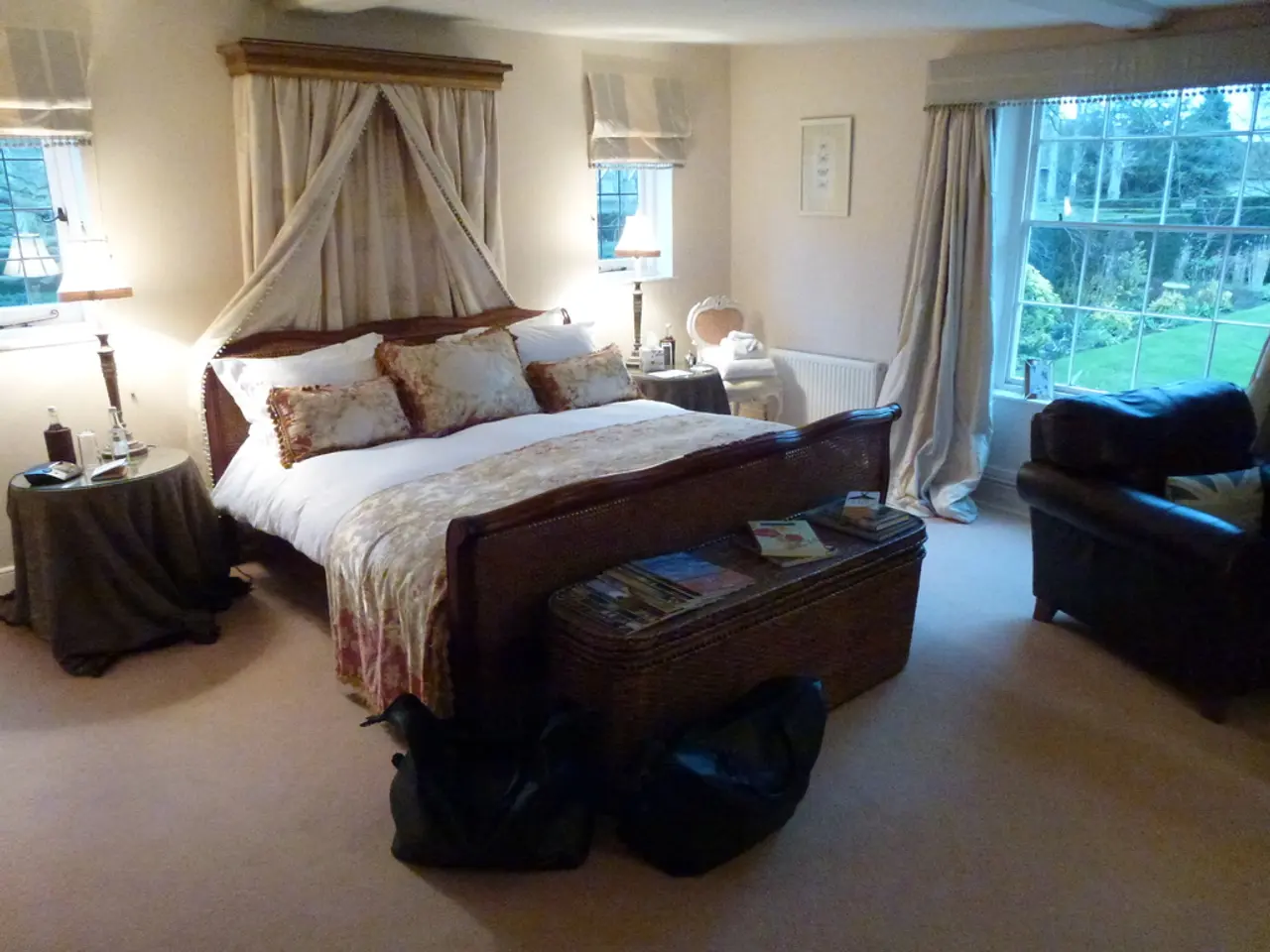Neglected Spaces: Frequently Overlooked During Cleaning Routines - Bed
In the quest for a good night's sleep, maintaining a clean and hygienic sleep environment is crucial. A recent study has shown that holistic bed hygiene not only improves sleep quality but also protects against allergies. Unfortunately, the bathroom, too, is a haven for bacteria. To effectively eliminate dust mites, bacteria, and mold from mattresses, here are some key steps to follow:
- Regular Vacuuming: Vacuum your mattress thoroughly every 3–6 months using a vacuum cleaner with a brush or upholstery attachment. This helps remove dust, dust mites, skin cells, pet dander, and bacteria. Before vacuuming, ensure you clean the vacuum attachment with warm, soapy water to avoid redistributing germs.
- Spot Clean Stains: Treat stains promptly using a mild dish soap mixed with warm water. Dab gently rather than saturating the mattress to avoid moisture retention that promotes mold growth.
- Deodorize and Disinfect:
- Spray the mattress lightly with a solution of equal parts distilled white vinegar and water to neutralize odors, disinfect, and prevent mold. Avoid soaking the mattress, and let it air dry completely.
- Alternatively, mix hydrogen peroxide with water and lightly mist the mattress to kill bacteria, then air dry.
- Tackle Mold: For visible mold, spray equal parts water and white vinegar, use a soft bristle brush to gently scrub mold spores, then lightly mist rubbing alcohol on the area and blot dry with a clean cloth. Allow the mattress to dry fully before use, ideally in direct sunlight (unless latex).
- Odor Control: Sprinkle baking soda on the mattress surface and let it sit for at least an hour before vacuuming to absorb odors and refresh the mattress.
- Air Out the Mattress: Leave your bed unmade for a few hours each morning to allow trapped moisture to escape. Periodically stand your mattress against a wall or place it in direct sunlight to help kill dust mites and mold spores naturally.
- Professional Deep Cleaning: Consider professional mattress cleaning annually for deep sanitation, especially if you have allergies or respiratory issues.
Following these combined cleaning and maintenance steps significantly reduces dust mites, bacteria, and mold, thus improving the sleep environment, air quality, and overall health.
Additional recommendations include using mattress protectors that are dust mite-proof for ongoing prevention, maintaining bedroom humidity below 50% to discourage mold growth, and replacing your mattress if mold contamination is severe or persistent. These steps reflect expert suggestions by sleep and health foundations along with practical cleaning methods highlighted in recent sources from 2025.
Remember, the average person spends a third of their life in bed, making it essential to maintain a clean and hygienic sleep environment. By following these steps, you can ensure a healthier sleep experience and help protect against allergies and other health issues.
- Maintaining a clean and hygienic sleep environment, which includes the removal of dust mites, bacteria, and mold from mattresses, can lead to improved sleep quality and better protection against allergies.
- To further enhance health-and-wellness, it's advisable to follow a holistic approach, not just for the bed, but also for the home-and-garden, such as using dust mite-proof mattress protectors and keeping bedroom humidity below 50%.
- Incorporating nutritious food and a balanced lifestyle into your routine can also contribute to overall health when coupled with a clean sleep environment.




